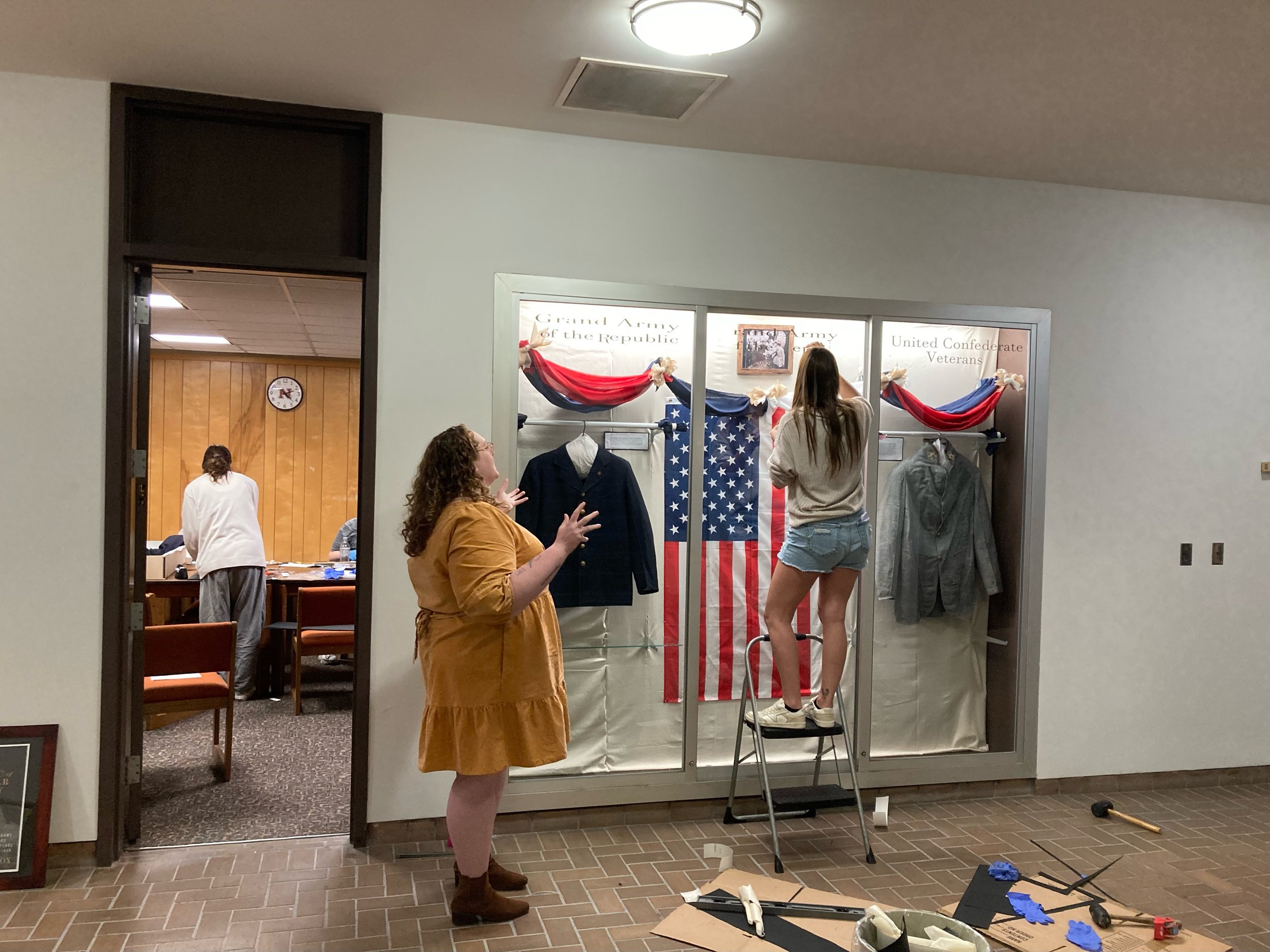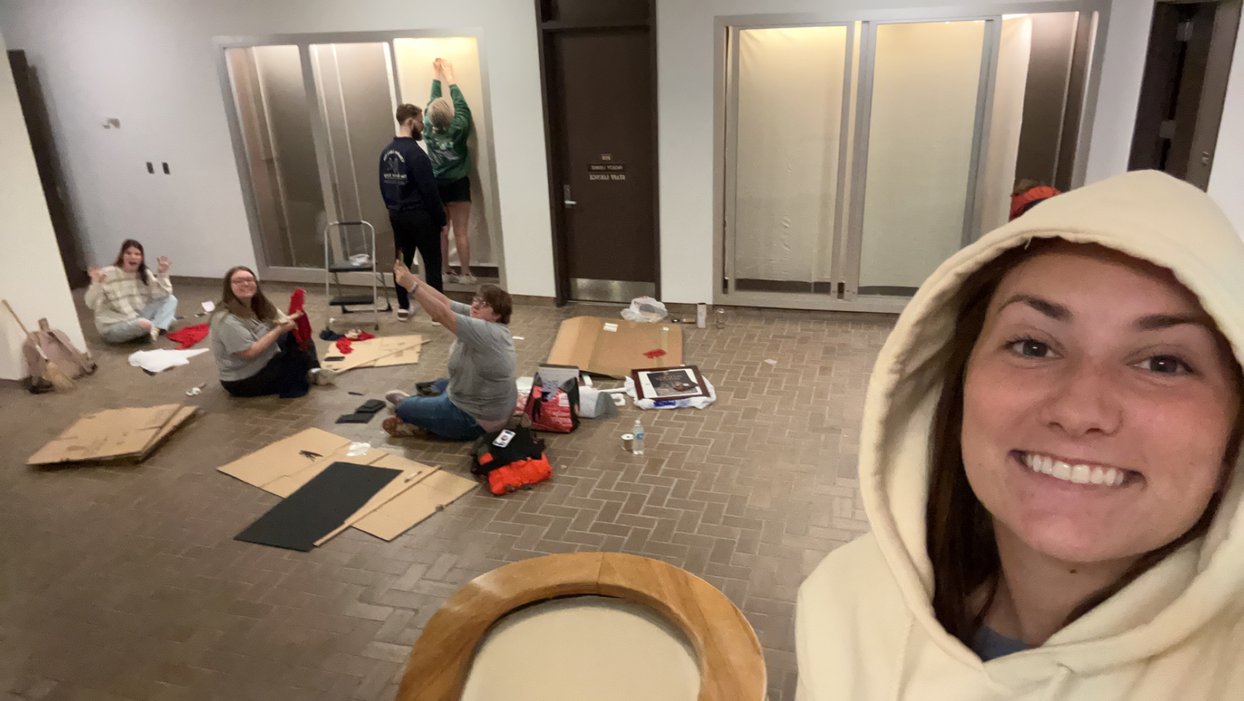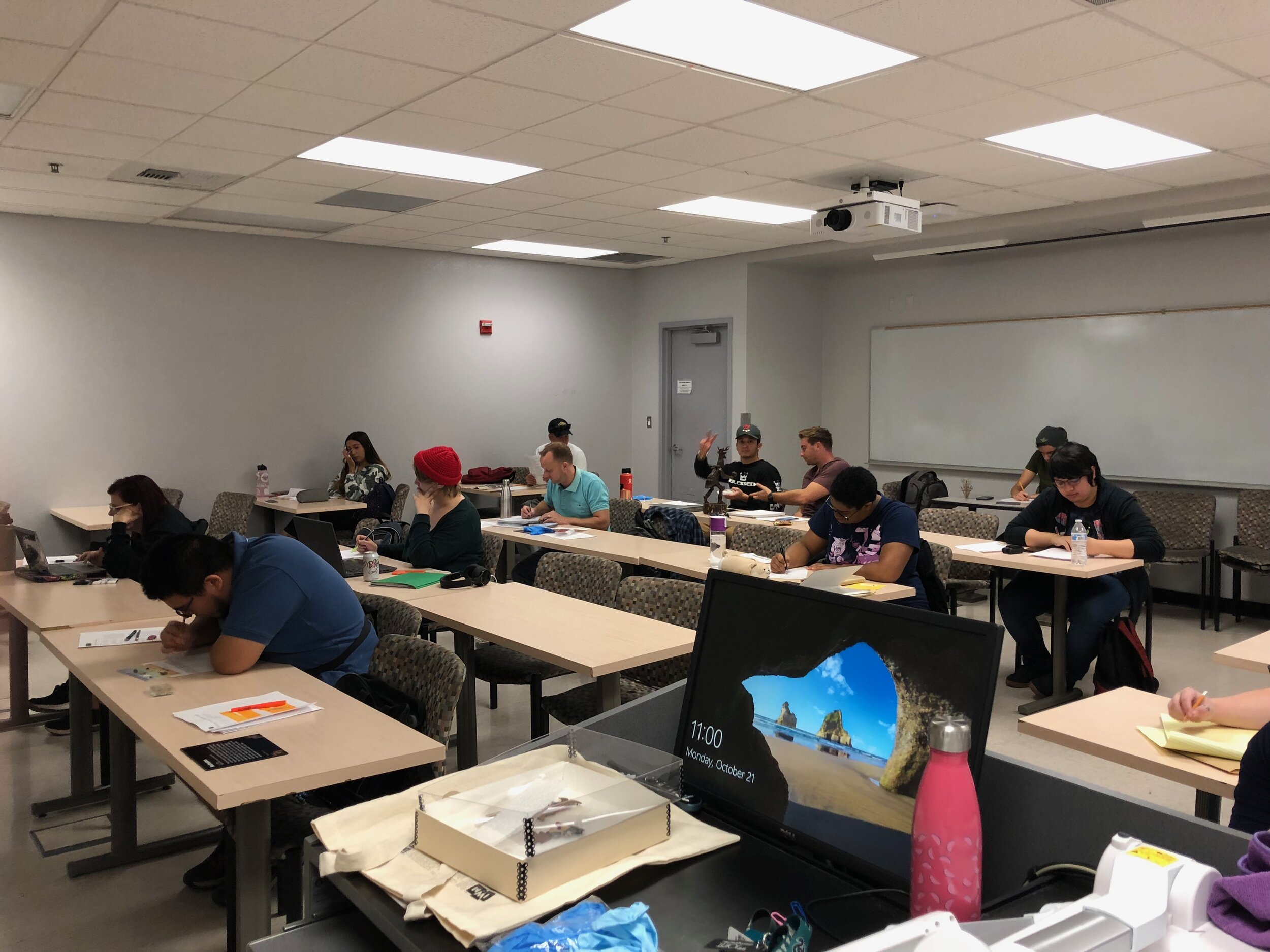Texas A&M University, College Station, Texas
As an Assistant Professor of History, I use a variety of media, including material culture, primary source documents, places, and art, because I believe that these tools provide my students with better engagement with the course material and facilitate discussion. Overall, my classroom goal is to foster a caring, creative, and collaborative environment in which my students can learn and grow.
History 303, History and Memory
Remembering and Honoring the Aggie Experience Exhibit
Remembering and Honoring the Aggie Experience is an ongoing effort with each of my HIST 303 courses. This semester-long project unites Aggies through shared culture and acknowledges how the institution's complex character has kept its core values while evolving to incorporate each new generation of Aggies.
To see a video of the physical creation and student work from the Spring 2025 class, click here.
History 201, Introduction to Public History
Projects from this course will be published in December 2025.
Nicholls State University, Thibodaux, Louisiana
History 397, Museum Studies
The Fabric of Civil War Society Exhibit
Nicholls State University, Thibodaux, Louisiana
History 397, Museum Studies
The Fabric of Civil War Society Exhibit







History 490, The Modern History of Toys
The Nicholls Digital Toy Museum
To see their digital toy museum final projects click here.
The course provides a historical survey of the modern history of toys throughout the world. This is a show-and-tell-based course. Students examine the history and creation of toys by analyzing the materials and using the lens of race and class concentrating on cultural factors that determined gender identities, roles, and relationships.
History 397, Museum Studies
The National WWII Museum Archives
This course is an undergraduate level introduction to the history of museums, the field of museum studies, and the theoretical and practical issues confronting curators and public historians in the United States today. We examine the politics and practices of exhibiting public histories and how to collect, accession, and deaccession objects. We will answer the question “what is a museum” and discuss the various ways in which institutions engage with the public.
History 325, The US South
This course analyzes the history of the US South from European invasion to the present. The course is broken down into six sections that historians generally agree upon as generational categories/shifts. This course is a survey of the Southern politics, gender, race, and cultural/societal happenings.
History 319, American Women’s History
This course highlights the experiences, achievements, and representations of women of all social classes since European invasion to the present. Whenever possible, (sources permitting) we will look at women’s lives and experiences using a comparative framework focusing on race and class differences. We examine women’s voices and roles at critical historical junctures that include the more traditional wars and politics, cultural moments, and regional differences. We look at what defines women and gender and social constructs in the US.
History 318, Extraordinary Women since 1700
This course highlights the experiences, achievements, and representations of women of all social classes since 1700 throughout the world with a heavy focus on the Americas and Europe. Students will be introduced to the ongoing debate about differences between men and women, the conflict between gender and class, as well as different types of feminism through lectures, readings and discussions. Whenever possible, we will look at women’s lives and experiences using a comparative framework. We will focus on women’s voices at critical historical junctures that include the more traditional wars, revolutions and politics of the modern period but we will also look at cultural moments that have defined ideas about women and gender and that have influenced lived experience.
History 420, Civil War and Reconstruction
This course analyzes the history of the US Civil War from the rumblings of sectionalism in the early 1800s to the withdrawal of Federal troops from the South in 1877. The course is broken down into three sections: “The Impending Crisis,” which looks at the political, social, and economic issues leading up to the war, including the specific events that sparked the physical conflict in 1861; “The War,” which covers a plethora of issues combining military outcome, the home front, war leadership, diplomacy, combat motivation and resistance, technology, gender, and race motivations; and finally “Reconstruction,” which grapples with the issues associated with restructuring the nation and the integration of millions of formerly enslaved people and the lasting memory of the war in US memory.
History 256, US History since 1876
Each of my courses are hyflex or hybrid courses that promote flexibility in student learning and allow for adaptation to various circumstances.
University of Nevada, Las Vegas History Courses
As the instructor of record, I have experience teaching United States survey courses, a public history course, and a course on Southern women.
History 302, Introduction to Public History Course Description
Public history refers to the discipline of history applied in a multitude of ways for a general public. It is a scholarly field rooted in the content and practices of history, yet it has its own unique methods, issues and values. The field is wide and varied with many subfields such as archives, oral history, historic preservation, digital humanities, memory, and other fields. In addition to academia, public historians work in diverse settings such as museums, historical societies, corporate and public archives, and government agencies. This class surveys several branches of public history, theory and methods, ethics and professional issues. The readings of this course provide a foundation for a specific public history research project.
But first, questions we need to ask ourselves throughout the course. What is Heritage? What is Culture? How do we preserve the past? Whose job is it and how do they do it? How should they do it? Who’s History matters? And why? This course involves reading and discussion and helps you to understand these questions and provides you with the knowledge to develop your own answers. Here you will learn how to think about and do public history. You will learn public history’s theories and methodologies, its ethnical quagmires, its “biggest names,” and its best incarnations and practices.
History 110, Southern Women Culture and Identity
The course provides a historical survey of the experiences of women in the U.S. South from the colonial period to the present. Students examine the lives of Southern women using race and class concentrating on cultural factors that determined gender identities, roles, and relationships throughout the region. One of the assignments for this course is to contribute to the growing crowdsource website Freedom on the Move. This site teaches students the importance of expanding historic resources and provides an opportunity for students to participate in digital history.
History 101, United States Survey European Contact to 1877-Online
This course is an introduction to American history from European contact to 1877. Particular attention is devoted to examining the changing relationships between European, Indigenous, and African Peoples as well as to the internal evolution of these diverse societies. Along the way we explore such topics as colonization and cultural interactions between Europeans and Indigenous Peoples, the rise of slavery, the American Revolution, the beginning of industrialization, westward expansion, the Civil War, and Reconstruction.
This course is completely online using Canvas, meaning all lectures are prerecorded because the course is designed to be conducted at the student’s pace during the week while following deadlines.
History 101, United States Survey European Contact to 1877
Survey of United States political, social, economic, diplomatic, and cultural developments from colonial times to 1877. Includes examination of the United States Constitution.
Discussion Sections
From August 2015 through May 2017 I worked as a discussion leader for UNLV’s History 100 classes. I have extensive training in the span of United States History using primary documents and other hands-on resources·
“Revolutions and Constitutions: US, Russia, and Iran”- Dr. Paul Werth
“Historical Issues in Contemporary Society: The Meaning of Freedom in America”- Dr. Michael Green
“Hitler and the Constitution”-Dr. Collin Loader



